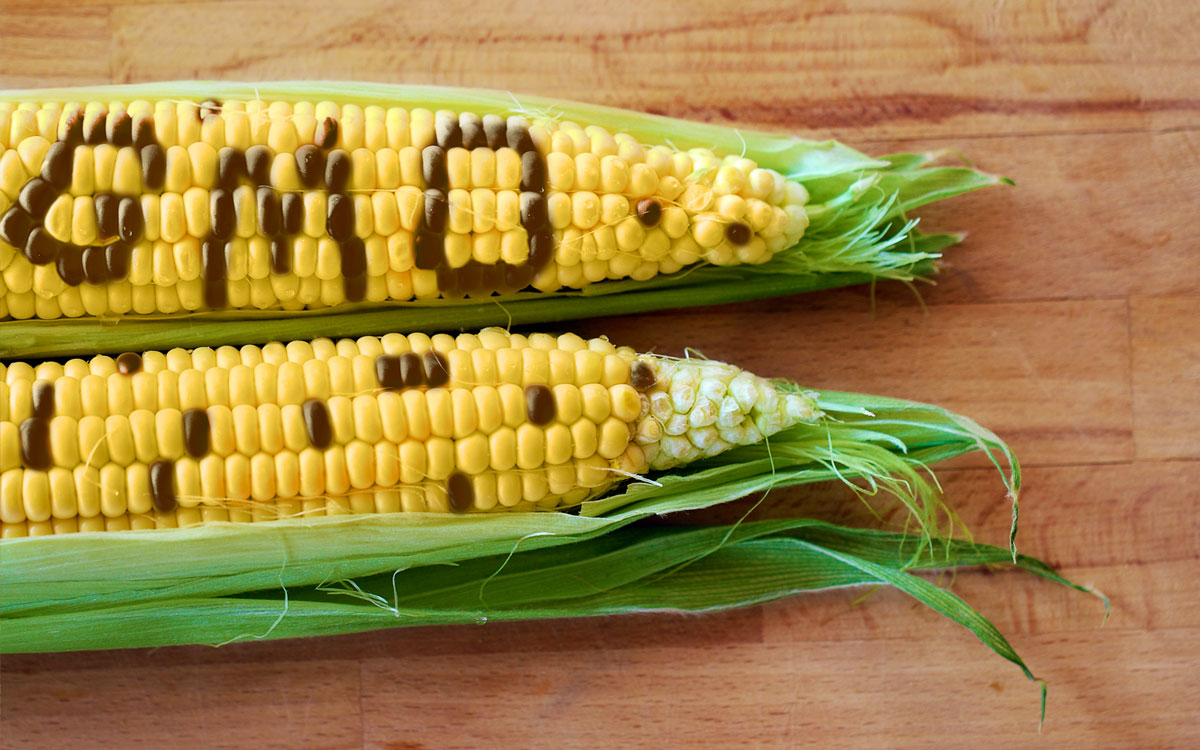
Are you curious about what makes Non-GMO foods special? Non-GMO foods are those that haven't been genetically modified in a lab. This means their DNA remains untouched by human intervention. People choose Non-GMO foods for various reasons, including health concerns, environmental impact, and ethical beliefs. Non-GMO stands for "non-genetically modified organisms," and these foods are often labeled to help consumers make informed choices. Eating Non-GMO can mean fewer pesticides, more natural growth, and supporting biodiversity. Whether you're a health nut or just curious, learning about Non-GMO foods can help you understand what you're putting on your plate. Ready to dive into 38 fascinating facts about Non-GMO foods? Let's get started!
Key Takeaways:
- Non-GMO foods are grown without genetic modification, promoting biodiversity and potentially tasting better. They are labeled and certified for easy identification at the grocery store.
- Non-GMO farming can be more sustainable, using fewer chemicals and preserving heirloom varieties. Consumer demand for non-GMO foods is growing, leading to ongoing developments and global interest.
What Does Non-GMO Mean?
Non-GMO stands for "non-genetically modified organisms." These are foods and products made without ingredients that have been genetically altered in a lab. Let's dive into some interesting facts about non-GMO foods and products.
-
Non-GMO foods are grown from seeds that have not been genetically engineered. This means their DNA has not been altered in a lab to include genes from other plants, animals, or bacteria.
-
The Non-GMO Project is a non-profit organization that offers third-party verification and labeling for non-GMO food and products. Their butterfly logo is a trusted symbol for non-GMO products.
-
Organic foods are always non-GMO. By definition, organic farming does not allow the use of genetically modified seeds or ingredients.
-
Non-GMO crops are often grown using traditional breeding methods. These methods involve selecting plants with desirable traits and breeding them over several generations.
-
Many people choose non-GMO foods because they believe they are safer and healthier. However, scientific consensus states that GMOs are safe to eat.
Benefits of Non-GMO Foods
Choosing non-GMO foods can have several benefits, from environmental impacts to personal health preferences. Here are some key points to consider.
-
Non-GMO farming practices often promote biodiversity. By not relying on genetically modified seeds, farmers can grow a wider variety of crops.
-
Non-GMO crops can be more resilient to pests and diseases. Traditional breeding methods can produce plants that are naturally resistant to local pests and diseases.
-
Some consumers believe non-GMO foods taste better. This is subjective, but many people prefer the flavor of non-GMO produce.
-
Non-GMO farming can support local economies. Smaller farms that use traditional methods often sell their products locally, keeping money within the community.
-
Non-GMO foods are often fresher. Because they are less likely to be shipped long distances, they can be picked at peak ripeness.
Non-GMO Labeling and Certification
Understanding how non-GMO products are labeled and certified can help you make informed choices at the grocery store.
-
The Non-GMO Project Verified label is the most widely recognized non-GMO certification in North America. Look for the butterfly logo on packaging.
-
USDA Organic certification also guarantees that a product is non-GMO. Organic standards prohibit the use of genetically modified organisms.
-
Some companies use their own non-GMO labels. Always check for third-party verification to ensure the claim is accurate.
-
Non-GMO labels can be found on a wide range of products, from fresh produce to packaged snacks. This makes it easier for consumers to find non-GMO options.
-
Non-GMO certification involves rigorous testing. Products must be tested at multiple stages of production to ensure they meet non-GMO standards.
Common Non-GMO Foods
Certain foods are more likely to be non-GMO, either because they are naturally non-GMO or because they are commonly grown using traditional methods.
-
Most fruits and vegetables are naturally non-GMO. Apples, bananas, and carrots are examples of produce that is typically non-GMO.
-
Non-GMO grains include oats, quinoa, and barley. These grains are often grown using traditional farming methods.
-
Dairy products can be non-GMO if the animals are fed non-GMO feed. Look for labels that specify non-GMO feed for cows, goats, or sheep.
-
Non-GMO soy products are available. While much of the soy grown in the U.S. is genetically modified, non-GMO soybeans are still cultivated.
-
Non-GMO corn is also an option. Like soy, corn is often genetically modified, but non-GMO varieties are available.
Environmental Impact of Non-GMO Farming
Non-GMO farming practices can have a significant impact on the environment. Here are some ways non-GMO farming can be more sustainable.
-
Non-GMO farming often uses fewer chemicals. Traditional breeding can produce plants that are naturally resistant to pests, reducing the need for pesticides.
-
Crop rotation is common in non-GMO farming. This practice helps maintain soil health and reduces the need for chemical fertilizers.
-
Non-GMO farming can help preserve heirloom varieties. By growing traditional crops, farmers help maintain genetic diversity.
-
Non-GMO crops can be more adaptable to local conditions. Traditional breeding methods can produce plants that are well-suited to the local climate and soil.
-
Non-GMO farming can reduce water usage. Some non-GMO crops are bred to be more drought-resistant, requiring less water.
Challenges of Non-GMO Farming
While there are many benefits to non-GMO farming, there are also challenges that farmers face.
-
Non-GMO seeds can be more expensive. Because they are not mass-produced like GMO seeds, they can cost more.
-
Non-GMO crops can have lower yields. Traditional breeding methods may not produce as high a yield as genetically modified crops.
-
Non-GMO farming can require more labor. Traditional farming methods often involve more hands-on work.
-
Non-GMO crops can be more susceptible to pests and diseases. Without genetic modifications, some plants may be more vulnerable.
-
Non-GMO farming can be less predictable. Traditional breeding methods can produce more variable results compared to genetically modified crops.
Consumer Trends and Non-GMO Foods
Consumer preferences are shifting, and non-GMO foods are becoming more popular. Here are some trends to watch.
-
Demand for non-GMO foods is growing. More consumers are seeking out non-GMO options at the grocery store.
-
Non-GMO foods are becoming more available. Many major grocery chains now carry a wide range of non-GMO products.
-
Non-GMO foods are often marketed as premium products. They can be found in specialty stores and health food markets.
-
Some restaurants are offering non-GMO options. Diners can find non-GMO choices on menus at certain eateries.
-
Non-GMO foods are popular among health-conscious consumers. People who prioritize natural and organic foods often choose non-GMO products.
Future of Non-GMO Foods
The future of non-GMO foods looks promising, with ongoing developments and increasing consumer interest.
-
Advances in traditional breeding methods are improving non-GMO crops. Scientists are finding new ways to enhance crop resilience and yield without genetic modification.
-
Non-GMO foods are gaining global attention. Countries around the world are showing interest in non-GMO farming and products.
-
Non-GMO foods are part of a larger movement towards sustainable agriculture. As consumers become more aware of environmental issues, non-GMO farming practices are likely to grow in popularity.
Final Thoughts on Non-GMO Facts
Understanding non-GMO facts helps make informed choices about food. Non-GMO foods are not genetically modified, meaning they’re closer to their natural state. Many people believe these foods are safer and healthier. They also support biodiversity by preserving different plant varieties.
Non-GMO labeling can be confusing, but it’s worth learning. Look for certifications like the Non-GMO Project Verified seal. This ensures the product meets strict standards. Also, non-GMO doesn’t always mean organic, though organic foods are usually non-GMO.
Farmers growing non-GMO crops often use fewer chemicals, which benefits the environment. Supporting non-GMO products can encourage sustainable farming practices. It’s a small step that can make a big difference.
In short, knowing these facts empowers better decisions about what we eat and how it impacts the world. Stay curious and keep learning about your food choices.
Frequently Asked Questions
Was this page helpful?
Our commitment to delivering trustworthy and engaging content is at the heart of what we do. Each fact on our site is contributed by real users like you, bringing a wealth of diverse insights and information. To ensure the highest standards of accuracy and reliability, our dedicated editors meticulously review each submission. This process guarantees that the facts we share are not only fascinating but also credible. Trust in our commitment to quality and authenticity as you explore and learn with us.


